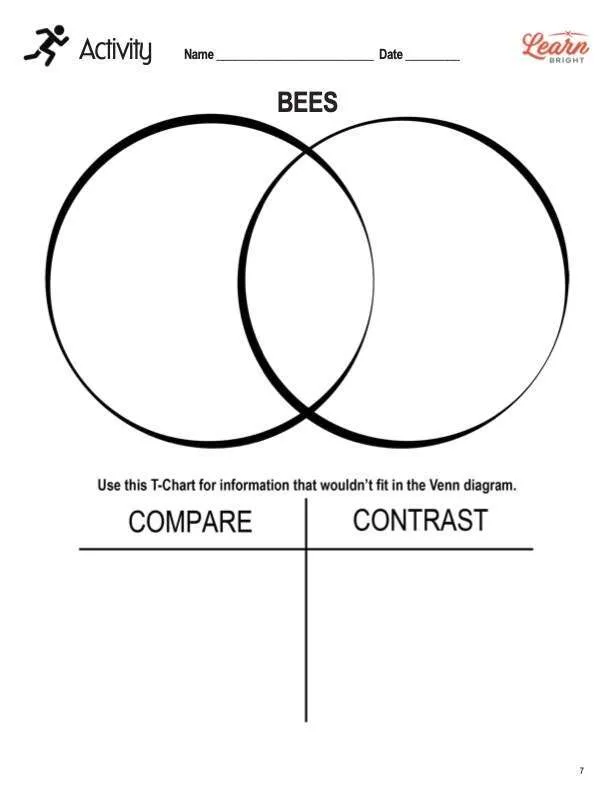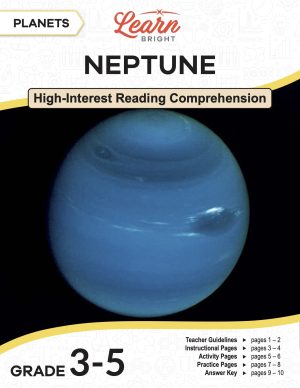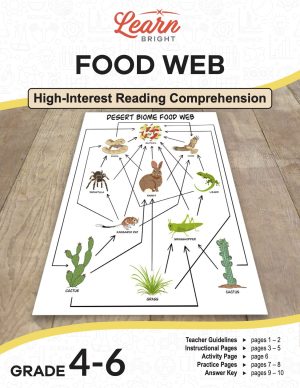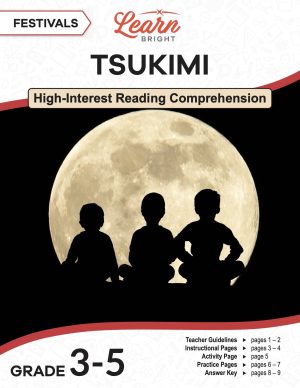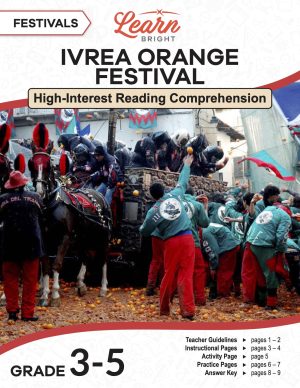Description
What our Compare and Contrast Nonfiction Texts lesson plan includes
Lesson Objectives and Overview: Compare and Contrast Nonfiction Texts teaches students how to analyze two texts about a similar nonfiction subject. Students will use what they learn in these texts and write about the subject. They will also learn how to resolve any differences between the texts by researching and assessing each text’s credibility. This lesson is for students in 4th grade and 5th grade.
Classroom Procedure
Every lesson plan provides you with a classroom procedure page that outlines a step-by-step guide to follow. You do not have to follow the guide exactly. The guide helps you organize the lesson and details when to hand out worksheets. It also lists information in the orange box that you might find useful. You will find the lesson objectives, state standards, and number of class sessions the lesson should take to complete in this area. In addition, it describes the supplies you will need as well as what and how you need to prepare beforehand. The supplies you will need for this lesson are pencils, pens, highlighters, and the handouts. To prepare for this lesson ahead of time, you can gather the supplies and copy the handouts.
Options for Lesson
Included with this lesson is an “Options for Lesson” section that lists a number of suggestions for activities to add to the lesson or substitutions for the ones already in the lesson. The primary suggestion for additions to this lesson is to have students play games that will strengthen their ability to determine a source’s credibility and determine whether given information is fact or fiction. The lesson lists a specific website, Jeopardy Labs, that has high-quality Jeopardy games for teachers to use! One of the recommended games is called Fact or Opinion Jeopardy. It will help students prepare to compare and contrast nonfiction texts.
Teacher Notes
The teacher notes page includes a paragraph with additional guidelines and things to think about as you begin to plan your lesson. This page also includes lines that you can use to add your own notes as you’re preparing for this lesson.
COMPARE AND CONTRAST NONFICTION TEXTS LESSON PLAN CONTENT PAGES
Compare and Contrast Nonfiction Texts
The Compare and Contrast Nonfiction Texts lesson plan includes two content pages. The lesson begins by stating that, by now, students have likely completed at least one short research project where they had to use multiple sources. They likely had to summarize these sources and use that information in their report. Sometimes, however, sources don’t quite agree with each other. The information you get from one source might contradict the information you get from another source. How do you figure out which one to use?
Comparing and contrasting are skills for reading and writing that can help you determine what nonfictions texts are saying. These skills also help you get rid of extra information that you don’t need or that isn’t accurate in some way.
How to Compare Texts & How to Contrast Texts
When comparing texts, you are trying to figure out how two things are alike or related. Sometimes, however, the two things you are comparing might not have very much in common. Sometimes, what they have in common is very obvious! The lesson asks students to practice using this skill by listing the similarities between apples and oranges.
Similarities can be harder to find than differences, because differences can be much more obvious. For example, apples and oranges are different colors. Finding the similarities can require more effort.
When contrasting texts, you are trying to figure out how two things are different from each other. The lesson asks students to list ways that apples and oranges are different.
Comparing nonfiction texts is different from, and less straightforward than, comparing objects. These texts present information about a specific topic. We sometimes also call nonfiction texts expository or informational texts. Encyclopedias contain nonfiction text, for example. So do textbooks, magazine articles, and biographies. Speeches count, too!
Strategies to Compare and Contrast Nonfiction Texts
You can use several different strategies to compare and contrast nonfiction texts, some of which depend on the number of sources you’re using. The first strategy is to use a Venn diagram. Many students will already know how to use these. Another strategy is a T-Chart, which is like a list. Each side of the T-Chart lists either similarities (compare) or differences (contrast). These can be useful if you have two sources.
If you have more than two sources, you can use a simple table instead. The first column can list the source, and the second and third columns will be for comparing and contrasting. In the example table provided in the lesson, they have three sources of information about Pluto. The information from all three sources does not agree. When that happens, it’s the job of the reader to analyze each text and determine what the truth is. Often, doing these comparisons can actually give you more information!
In this case, the source of the disagreement is that Pluto was demoted from officially being a planet because they changed the definition of what a planet is. Knowing that some scientists think that Pluto should not officially be a planet according to these guidelines actually teaches you more about the subject!
COMPARE AND CONTRAST NONFICTION TEXTS LESSON PLAN WORKSHEETS
The Compare and Contrast Nonfiction Texts lesson plan includes three worksheets: an activity worksheet, a practice worksheet, and a homework assignment. You can refer to the guide on the classroom procedure page to determine when to hand out each worksheet.
HONEY BEES ACTIVITY
If you would like, you can have students work in pairs or small groups instead of alone for the Students will first use a Venn diagram to compare two articles about bees. The worksheet provides a T-Chart as well so that students can write any additional information that doesn’t fit in the circles.
COMPARE AND CONTRAST NONFICTION TEXTS PRACTICE WORKSHEET
For the practice worksheet, students will choose a subject in which they have an interest. They will have to find three articles or other sources to research information on that subject. They will use the table on the page to compare and contrast the texts.
FOOTBALL HOMEWORK ASSIGNMENT
Students will compare and contrast American football with European football using a T-Chart.
Worksheet Answer Keys
This lesson plan includes answer keys for the practice worksheet and the homework assignment. However, both of these answer keys include example answers and note that students’ answers will vary. If you choose to administer the lesson pages to your students via PDF, you will need to save a new file that omits these pages. Otherwise, you can simply print out the applicable pages and keep these as reference for yourself when grading assignments.




